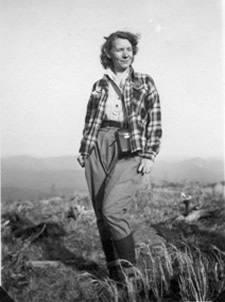http://alloveralbany.com/archive/2014/06/17/grace-peak
I hiked up East Dix this summer about a week before it was renamed, and I remember sitting at the summit and thinking that it was one of the most spectacular views I had ever seen from an Adirondack peak. I had a brief thought that it deserved a name of its own rather than sharing a name with a neighboring mountain, but it didn't stick with me until I read about the renaming. Grace Hudowalski was the first woman to summit all 46 of the high peaks and was "a mentor to thousands of people as she shared her enthusiasm for the Adirondacks with everyone". Today, Grace Peak and Esther are the only two high peaks named after women.
When I read Schneider's passages about the naming of the Adirondack park, and the naming of peaks within it, it seems pretty arbitrary how massive geologic features can be labeled by whomever got there first. One man got to the top of Marcy before anyone else did, so he had the ability to give a name to every other mountain he could see. In Emmons' case he gave titles to people who helped him get to Marcy, which is a very admirable way to name the peaks. He did not even name one after himself--someone else did that later. However, despite his good intentions, I wish that more of the mountains were named after something other than 19th century government and corporate officials, even though they have been around for millions of years. There are definitely exceptions to that trend--Skylight and Gothics are named for their physical features, Algonquin and Iroquois are named after Native American groups, and I think that Grace Peak is also an exception in the sense that Grace was a role model and an Adirondack local rather than a landowner from far outside of the park.
View from summit of Grace, taken by John Pikus
Source: http://adk46er.org/news.html


I find it really interesting that these two peaks are the only ones named after women, and that I had never really thought about how or why peaks are named what they are before this. I normally just climb them and accept their name and that it will always be that way.
ReplyDeleteI just read that the DEC took down the new sign of the new name of the old mountain, because it doesn't conform to regulations. That seems a little aggressive, though of course the name will stay on new maps. I need to hike that mountain!
ReplyDeleteThe source of peak names are fascinating because I, and I suspect many other modern backpackers, struggle to imagine a scenario in which they encountered an anonymous peak, much less a newly traveled one. The Adirondacks in particular have been an established, human occupied entity for so long compared to my age that its hard to imagine summiting anything but the MacIntyre or Great Ranges, or looking down at anything but the Champlain Valley, all of which were named under circumstances we could never understand.
ReplyDelete